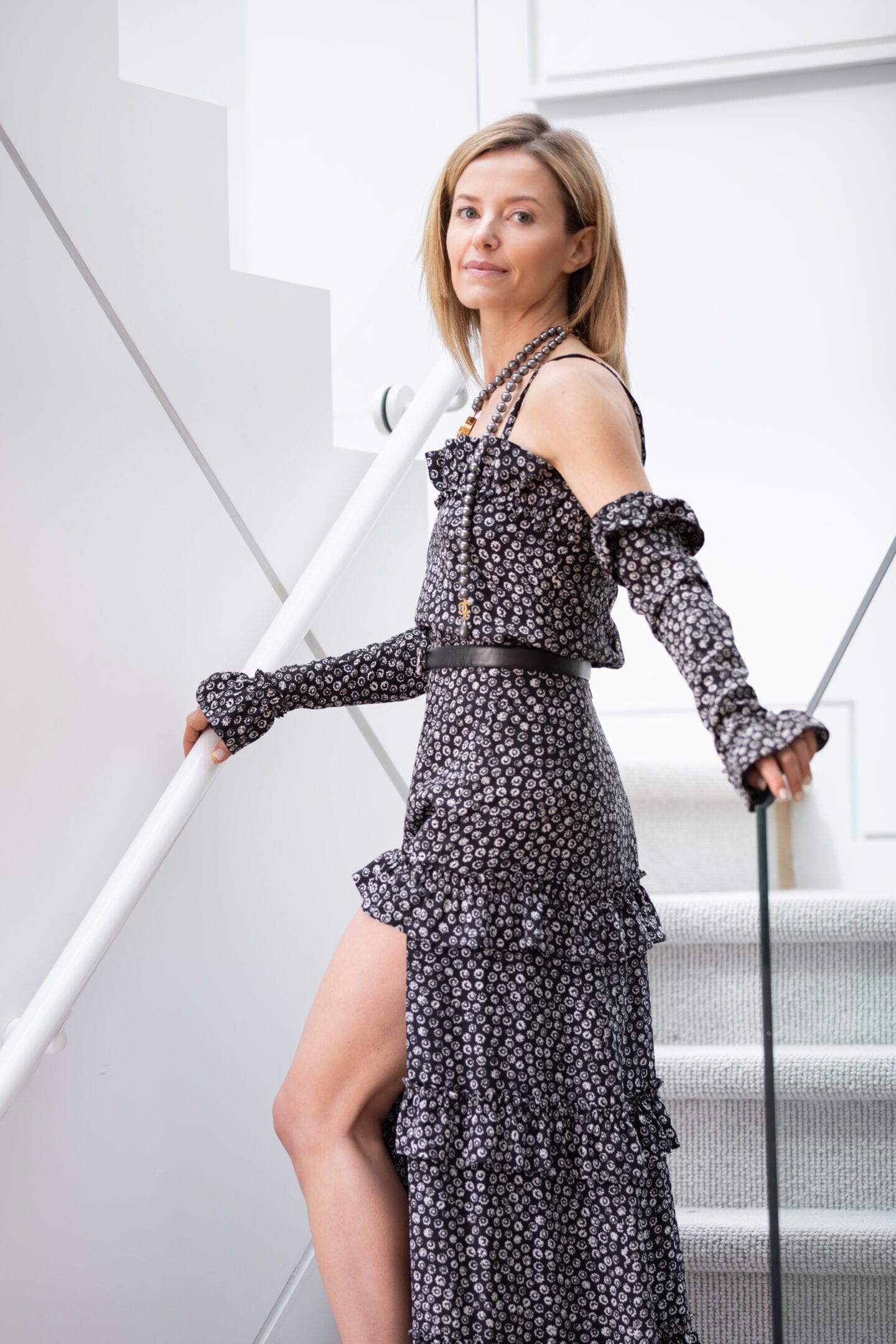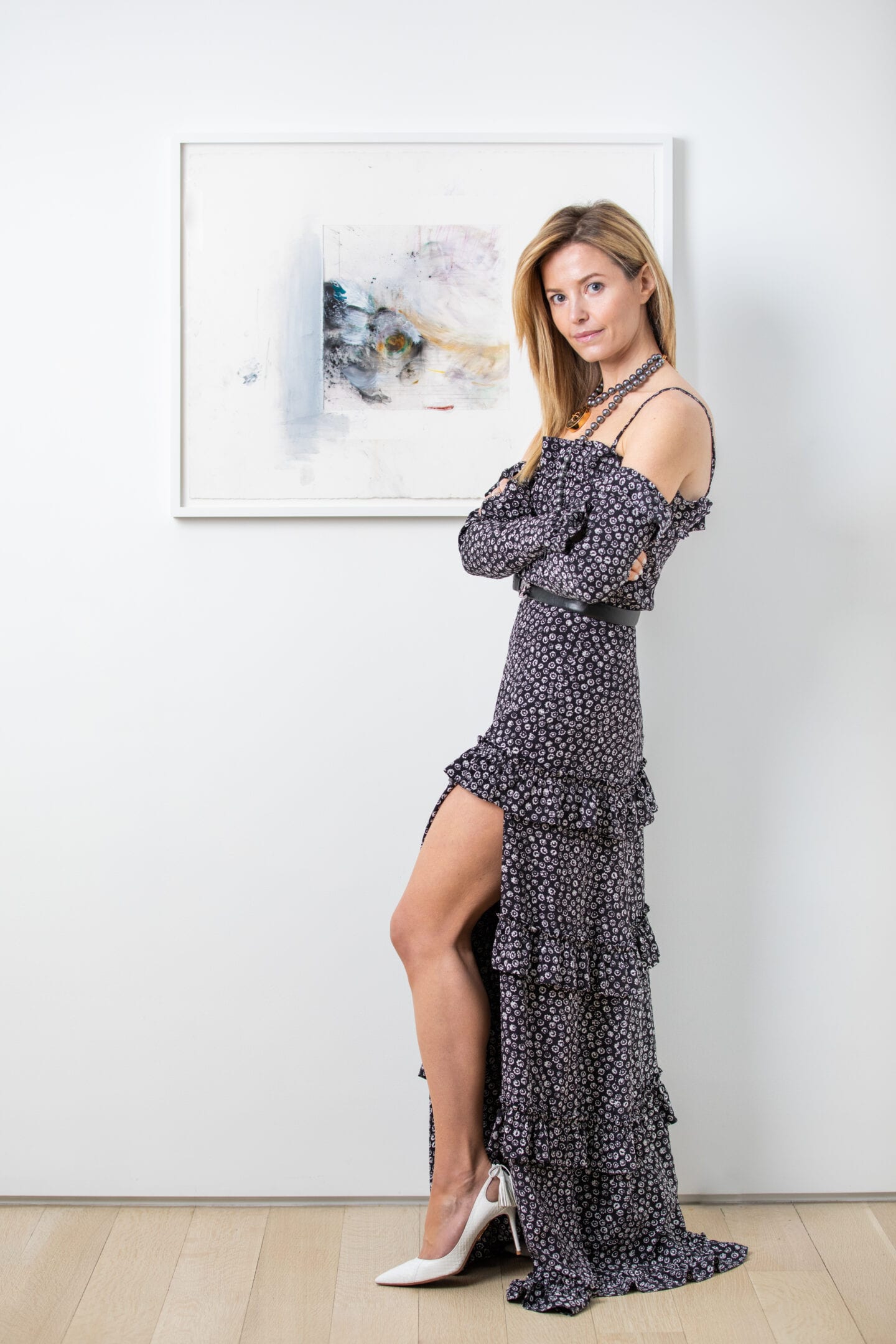Meet Sarah Stein-Sapir, the New York Art Advisor on Billionaire’s Row
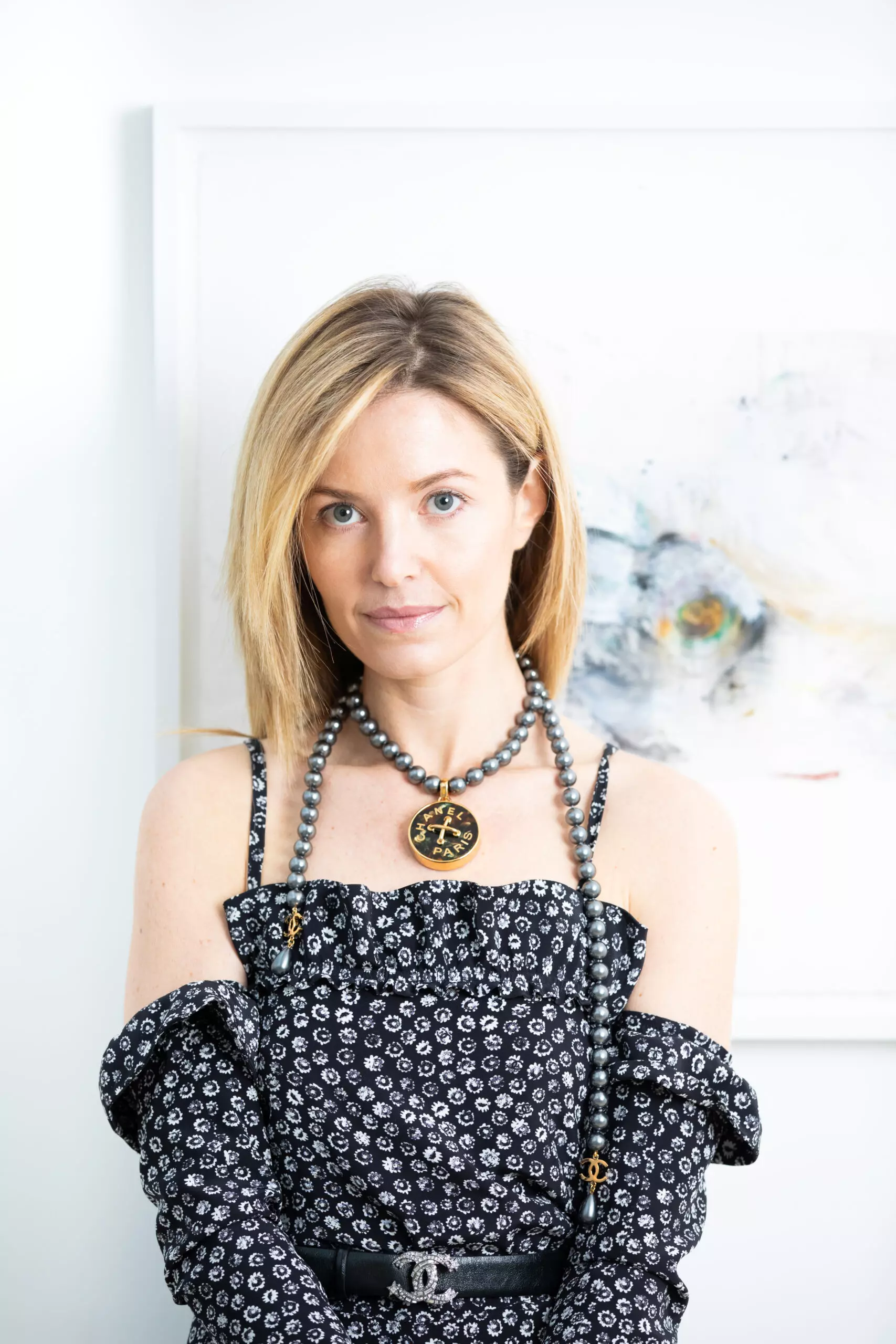
The art advisor’s latest project on Billionaire’s Row and what it’s like to navigate a discreet art business.
Meet Sarah Stein-Sapir, the New York art advisor closing big deals. In addition to working with private clients, for the past six years, she’s been the art advisor for the world’s tallest residential building, Central Park Tower, ranging from the lobby and amenity spaces to the hallways and the top floor. Her most recent and largest project to date is with Extell’s One57, a 90-storey high-rise designed by architect Christian de Portzamparc. The striking modern glass tower is found on what is commonly referred to as Billionaire’s Row, located along the southern end of Central Park.
Starting off as an intern at Gagosian more than ten years ago, Stein-Sapir went on to work for the mega-dealer Philippe Ségalot of Giraud Pissarro Ségalot and consulted for some of the world’s biggest collectors, primarily dealing in 20th century and contemporary art. Continuing her career in the private sector, she worked with auction house expert Guy Bennett and then opened her own company in 2013, Stein-Sapir Art. The artrepreneur talks to us about her whirlwind career and what it is like to be running a thriving private art advisory for ultra-high net worth individuals and major developers. (We inquired about her clients–of course she didn’t say–because trust, discretion, and confidentiality are key to an art advisor’s reputation).
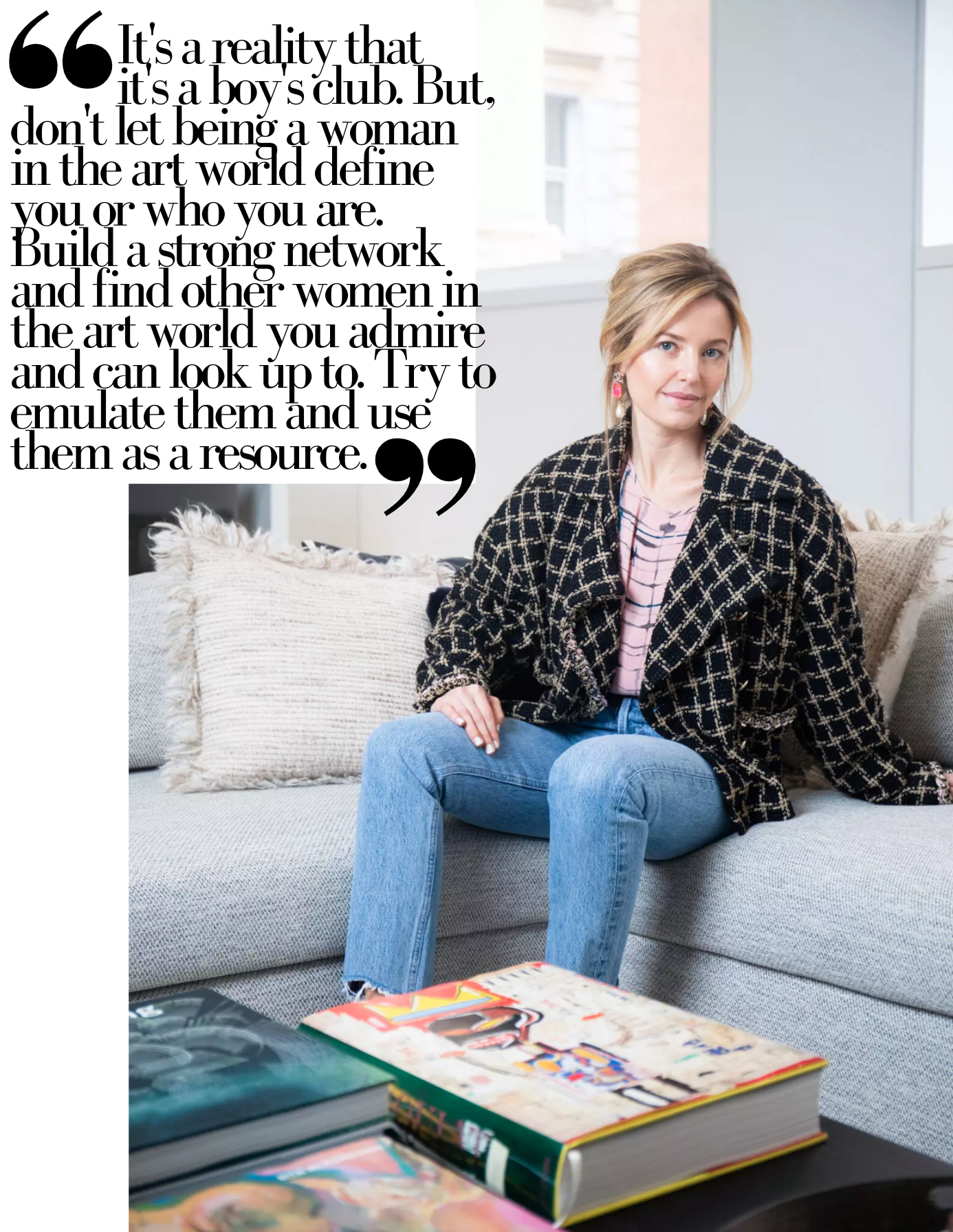
What is your current role in the art world?
Currently, I’m a private art consultant that specializes in contemporary and emerging art. I advise private individuals and developers through Stein-Sapir Art. From the unique vantage point of having worked for a gallery, auction house, and private dealer, it became clear to me that what excited me most was supporting artists I believed in and helping clients build individual collections.
Can you distill your role as an art advisor?
Private art advising is a bespoke business; roles vary depending on the experience and needs of each client.Responsibilities range from sourcing specific works, to collection management, to helping a client understand what art they appreciate. If someone decides to work with an advisor, it’s important to find someone that they trust and can be honest with- finding the right art is a process and a conversation, because needs change and tastes evolve. The ultimate goal, for me at least, is to educate my clients, help them navigate the art world and acquire the best examples of the works they love.
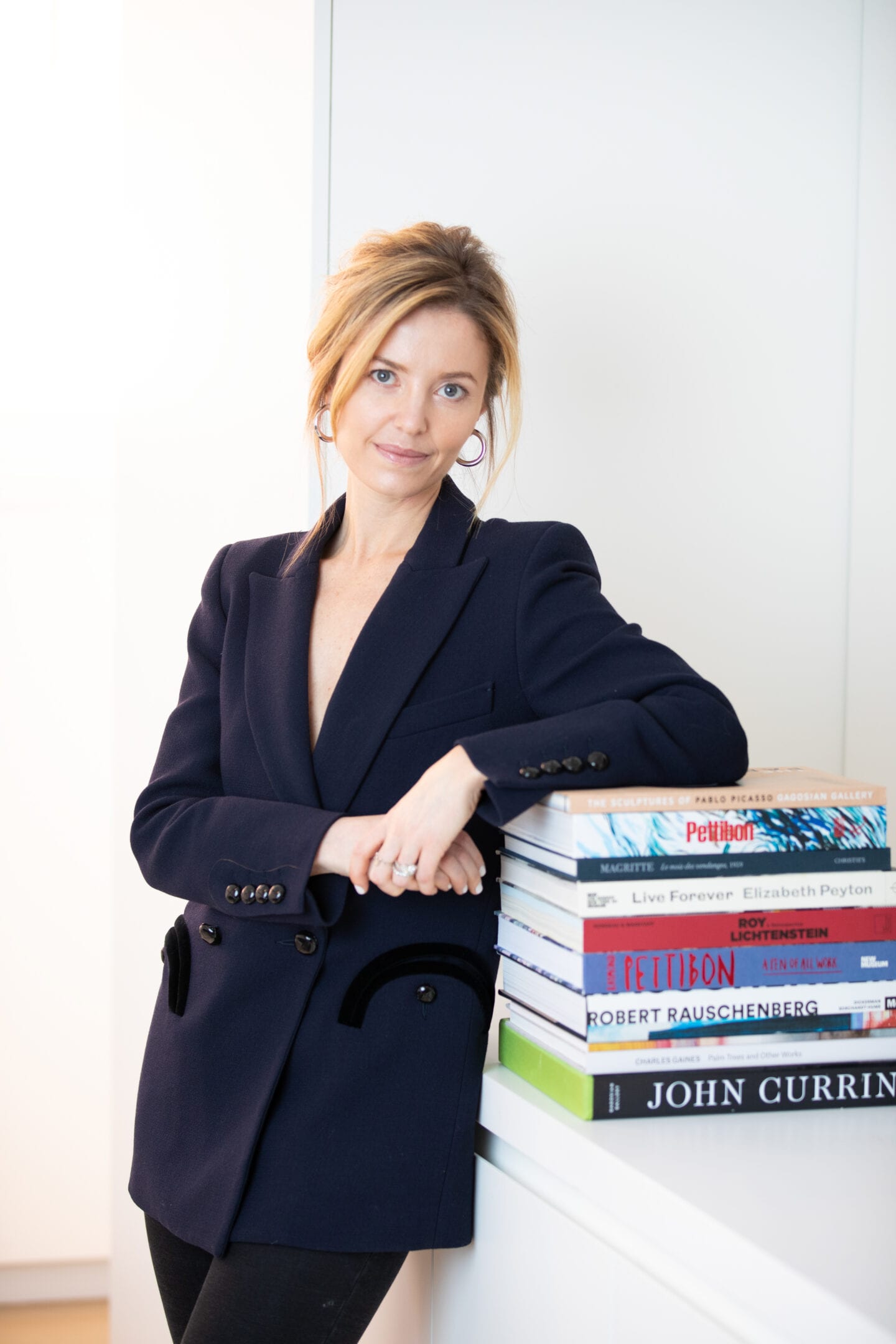
What is your typical day like?
My day-to-day differs depending on the season and which clients/projects are active. Some days I’m going to gallery shows, museum exhibitions or visiting artist studios and other days I’m going to auction previews,aving client lunches and attending evening sales. A lot of days are a lot less glamorous – they consist of me sitting at my computer doing research, looking at floor plans, preparing proposals, or dealing with shipments and paperwork.
From beginning to end, what part of the deal process is most rewarding for you?
In terms of the evolution of a transaction, the moments I find most rewarding are when I’ve found exactly what my client is looking for and when they give me the go ahead to make the deal.
How did you develop a client base of ultra-high net worth individuals and major developers? How did working with major dealers help with creating your own advisory?
Starting out, I tried to see every opportunity as a learning experience and carried those lessons throughout my whole career. I learned from the powerful, successful people I’ve worked for and with, from how to deal with clients and difficult situations, to making presentations to how to phone bid. Throughout my career, I have been exposed to doing business at a high level in the art world which is something I’ve continued to do with my own clients. Of course, like anyone starting out, I did my share of administrative work too. Climbing through the ranks and putting your time in is a necessary and important step in any field.

At what point did you decide to go out on your own?
It started organically. My position provided me both the flexibility and the security to open my own company and start developing my own client base. Initially, my clients came to me via word-of-mouth. I’m very involved in various organizations and have developed a really strong network of friends and colleagues. It’s difficult to market yourself when your business is based on privacy. Reputation is everything. As I gained experience and confidence, I was more pro-active about putting myself forward for projects and developing clients.
What challenges did you face starting your business?
There are a lot of challenges working for yourself, it’s very different than working for a large company. Like you said, I’m on my own—when it comes down to it, it’s just me. You have to be incredibly proactive and self-motivated. No one is telling you about deadlines, how to negotiate a deal or how to develop new business. You have to understand and operate all facets of the business, big and small. It’s important to have a strong team of specialists from lawyers to insurance carriers to shipping companies that you can call on when necessary. Resiliency is so important. Things happen, issues arise and mistakes are made but you learn from them and move on. Figure it out. Know who to talk to. Go to your clients with solutions not problems.
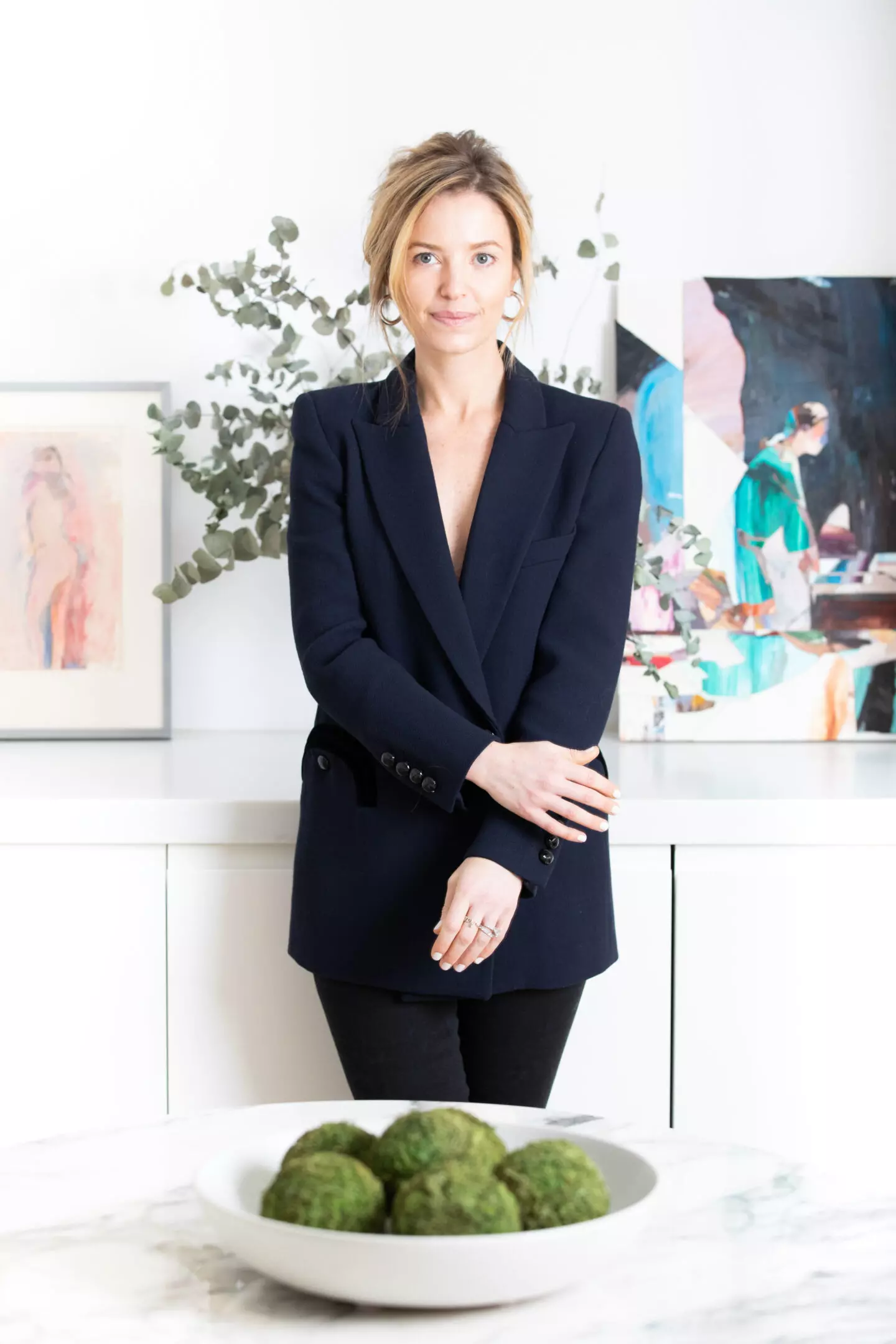
How did you go from starting out to a thriving art advisory business?
With time, I gained the confidence and experience that I needed to feel comfortable proactively looking for clients. Early on, there was definitely some fake it till you make it. I’d never done a proposal before for my first development project. But I figured out how to do it, went for it and got it. that captivated me as a child. I loved what I was looking at but didn’t understand it. I was fascinated by how and why you could be drawn to certain things. In my Master’s thesis, I explored why people aren’t drawn always to the classic ideas of beauty but deformation and imperfection as well (specifically in the works of Lucien Freud, Jenny Saville, Francis Bacon, and Marlene Dumas). I’ve always been fascinated with why, on some level, you’re drawn to and feel a certain way about things. Art, music, and theater make you feel. For me, I was always drawn most to the visual. It was also important to me to engage in the art community as a whole and develop a network. Being active in the community provides a deeper understanding of art and what artists are doing in the public and museum spheres. Sales are just one part of the art world.
You are so obviously passionate about your work and art. How would you answer the question “why do you love art?”
I love art because of its ability to make you think and feel. I grew up surrounded by art, it’s in my blood. My parents had a Magritte book on our living room table that captivated me as a child. I loved what I was looking at but didn’t understand it. I was fascinated by how and why you could be drawn to certain things. In my Master’s thesis, I explored why people aren’t drawn always to the classic ideas of beauty but deformation and imperfection as well (specifically in the works of Lucien Freud, Jenny Saville, Francis Bacon, and Marlene Dumas). I’ve always been fascinated with why, on some level, you’re drawn to and feel a certain way about things. Art, music, and theater make you feel. For me, I was always drawn most to the visual.
People commonly have a perspective about film or music yet not in visual art. They might predicate themselves by saying “I know nothing about art.” Why do you think that is?
I think the art world intimidates a lot of people and they’re afraid to speak un-intelligently. Or are afraid to not like something that everyone else likes. It’s easier to say that you don’t know and not take a stance. However, you can develop how to understand quality, a sense of what you’re looking at, what to look for, and ultimately connoisseurship. The idea of good taste in the art world— taste is subjective.
Why, unlike in film or music, do you think people are intimidated about having a perspective? Like you were as a child, is being interested in the visual arts is inherent?
I think in some ways music and film can be easier to digest. Sometimes it is true that if you show a person a blank canvas, they might say “there’s nothing there.” But explaining the history of minimalism as well as the artistic elements of light and shadow can change their perception. You can teach someone a better understanding of a work which can changes how they feel about it. That’s part of the role of the advisor – to educate and provide depth and understanding. I loved studying art history in all of its complexity — you’re learning about aesthetics, history, psychology, and economics at once. I don’t think an interest in visual arts is necessarily inherent – anyone can look at something and have an opinion or a feeling. Whether or not that person wants to understand it is a different story.
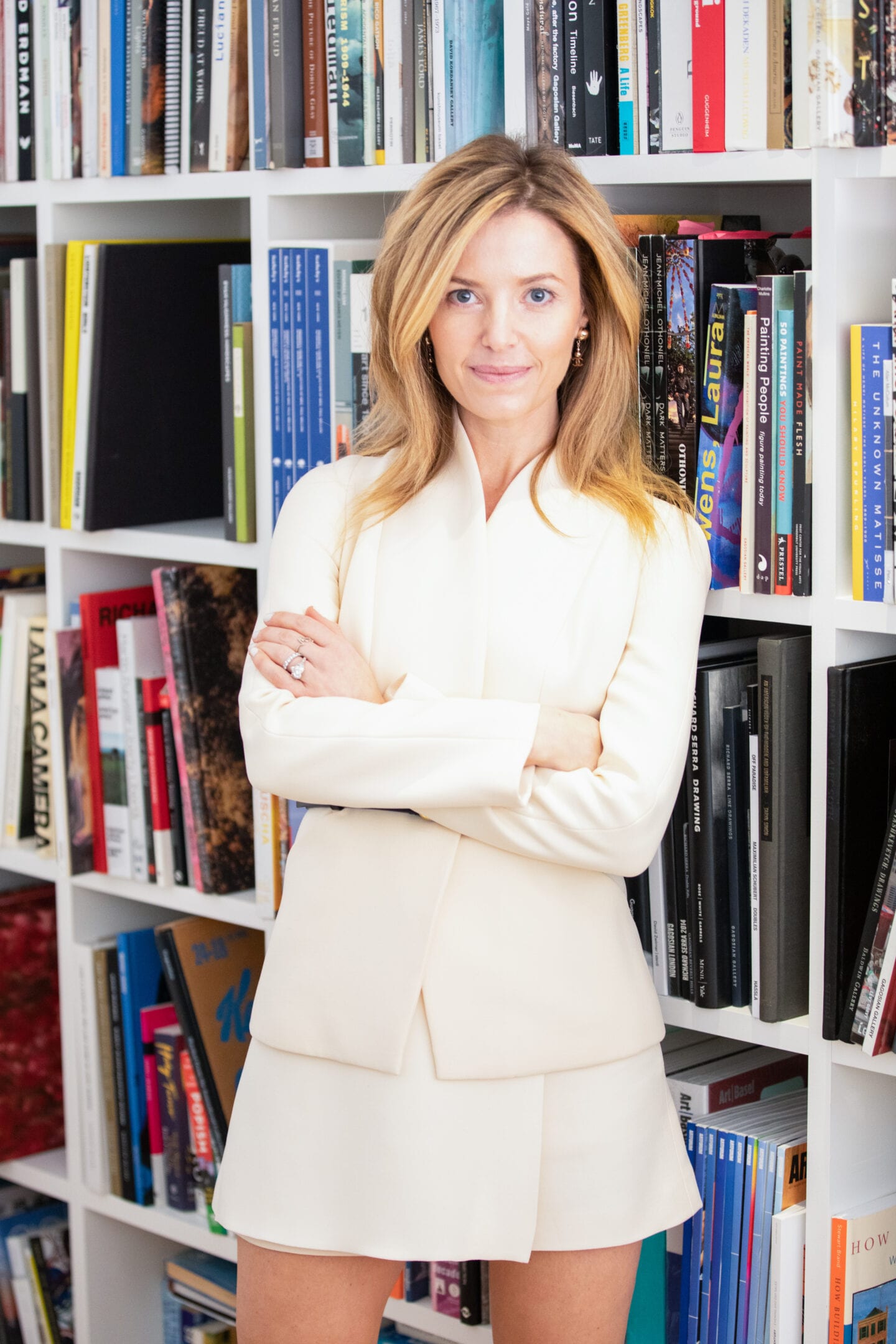
What traits got you to where you are today and what advice would you give to people for being successful in the art world?
Being trustworthy, respectful, discrete, and honest has served me well. If you pursue a career in the art world, remember that your fellow interns and coworkers will be your colleagues forever. No matter who you meet, from art handlers and front desk staff to important clients and strangers coming in off the street — always carry yourself well and be polite.
Always be transparent and straightforward. In a largely opaque business, it’s important to maintain your clients’ and colleagues’ trust. You can’t get that trust back once it’s broken.
Don’t be afraid to ask questions and admit your mistakes. People may see that as a sign of weakness, but that’s how you learn. If you make a mistake – don’t make an excuse– admit your mistake, figure out how to fix it, learn from it and move on.
It’s a reality that it’s a boy’s club. But for women in particular, don’t let being a woman in the art world define you or who you are. Build a strong network and find other women in the art world you admire and can look up to. Try to emulate them and use them as a resource.
What characteristics do you value in an artists or artworks?
I’m immediately drawn to pieces that are temporal and tactile, that are very much about process. I’m most interested in works that evoke a sense of how the artist is working through their subject and materials.
Who are some of your favorite female artists?
That’s such a hard question, I have so many. Pat Steir is one of my all-time favorite artists. She’s one of the reasons why I love painting. She’s one of the first artists I really started following years ago. She’s incredibly inventive and nuanced, still creating powerful, moving, and beautiful work.
I love the Abstract Expressionist painters – Lee Krasner, Joan Mitchell and Helen Frankenthaler. Pursuing their work in the 1940s and 50s alongside their much more recognized male counterparts (in some cases, spouses) was challenging. I so respect that they knew they had to create art and didn’t let anything stop them.
For more contemporary, I love the dynamic, bold abstract paintings by Charline von Heyl and the ambiguous, fluid, semi-figurative works by Christina Quarles. I could go on and on.
What are some female artists and artworks that you collect?
A small figurative work by Rita Ackermann. An ethereal painting on paper by Lucy Dodd. I’ve been following her since her first show in New York 8 years ago. Her use of pigments and unusual materials is so painterly, spiritual and symbolic.
Diana Al-Hadid, Erin Shirreff, Jaclyn Conley, Miya Ando… what these artists have in common is their interest and engagement with material and process, with ways of seeing and being. I have also works by Antonio Santín, Mark Hagen, Brian Rochefort, Nir Hod.
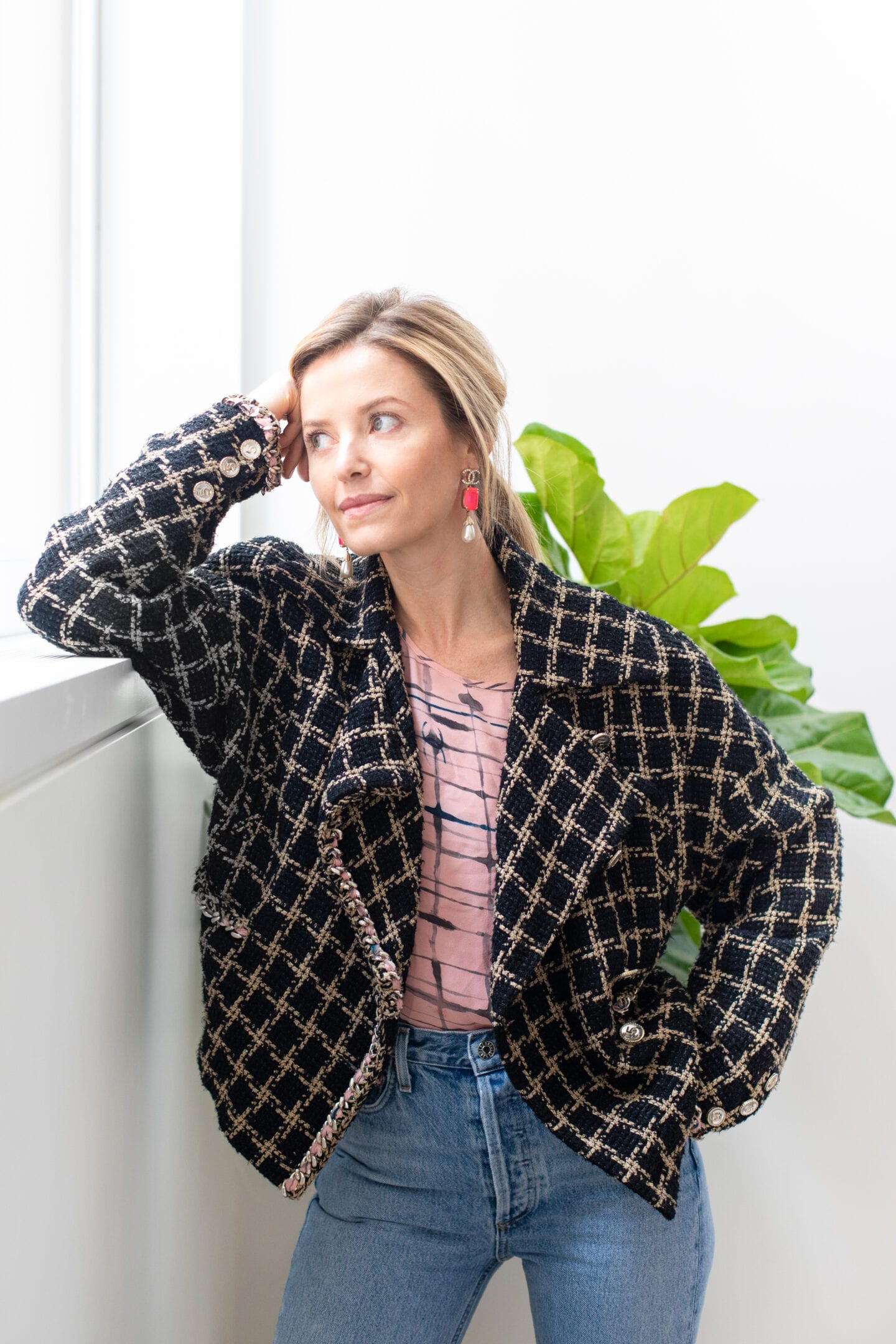
If you could own a piece from any artist, what piece would you choose?
That’s hard to answer. Immediately, I’m thinking a large, expressive De Kooning or Twombly painting. Also, though I deal primarily in contemporary art, I’d love to live with Monet’s Impression, Sunrise. I often find myself thinking of that painting.
Who are some women you’ve looked up to?
Dominique Levy. She’s incredibly intelligent and so well-spoken. I love listening to her speak and hearing about what she’s working on. I love her programming— she’s so artist-focused while still working in a successful business model.
Mostly, I look up to my peers. I’m proud of what they’ve achieved. For many of us, we started out as interns and now they’re running galleries, heads of sales, and have their own advisories. It’s inspiring to see them do well and succeed.

